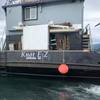Higher US Export, Lower Fleet Growth Aid LPG Exports
The Middle East is the most active export market of LPG exports on very large gas carriers(VLGC), said Norway-based LPG shipping firm Avance Gas.
Oslo-listed Avance Gas said in a statement that traditionally Saudi Arabia was the largest exporter, but though growing LNG production from mid-2000 combined with increased petrochemical use of LPG in Saudi Arabia, resulted in Qatar and UAE becoming the largest exporters.
Today Qatar and UAE each export about 10 million tons annually, Saudi Arabia 8-9 million tons and Kuwait 4-5 million tons. The Iranian export, which recent years has been 3-4 million tons annually is expected to fall significantly by early November with new US sanctions coming into force. The only independent quoted price for VLGC freight is the Baltic LPG1, which is based on Middle East loading.
The shipowner and operator pointed out that in 2012, the US changed from a being a net importer of LPG to an exporter, and LPG exports on VLGCs has grown from 7 million tons in 2012 to 24 million tons in 2017.
Today USA is the largest single LPG exporting country. There is no independent US based freight index, however, some shipbrokers quote the US freight market on a weekly basis.
The Baltic LPG1 was quoted at $35/ton as we entered into Q3 2018. By end-October, the LPG1 was quoted at $42/ton, after peaking at $49/ton mid-October. In Q1, the monthly average of VLGC liftings in Middle East was 62, increasing to 67 in Q2. The average VLGC liftings in Middle East in Q3 was 65.
Although the US is the single largest VLGC LPG exporter, the number of liftings is still below Middle East. The monthly average has grown from 27 cargoes in 2015 to 37 in 2016 and 45 cargoes in 2017. During Q1 2018, US exported average 46 monthly VLGC cargoes, growing to 48 in Q2 and 53 cargoes in Q3.
With a continued growth in US VLGC exports, the volatility in Middle East freight rates is higher than in US freight rates, however with a high correlation. The improved freight market from Q2 to Q3 2018 is explained by growth in both main export markets with a high percentage long-haul export from US.
By end September seven of ten newbuildings due in 2018 were delivered. One ship was sold for recycling during Q1, followed by another three ships Q2 and one ship Q3 2018. Two more ships have been delivered and one more ship sold for recycling in October.












